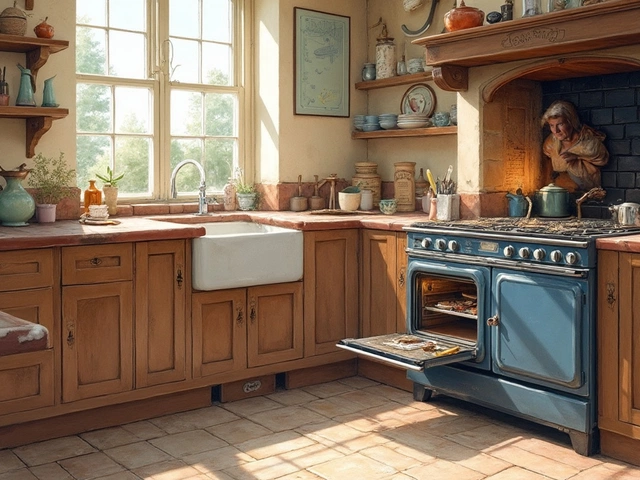Want to save money and avoid a service call? Doing simple installations yourself is easier than you think. With the right tools and a clear plan, you can replace a fan, swap an oven element, or fit a new hob without the stress of a professional visit.
First, gather the basics: a screwdriver set (flat‑head and Phillips), a wrench or adjustable spanner, pliers, and a flashlight. For anything that touches electricity, keep a voltage tester on hand and always switch off the circuit at the breaker. If you’re working on gas appliances, turn the gas supply off and check for leaks with a soap‑water solution. Having a clean workspace and a small container for screws makes the job smoother.
Safety isn’t optional. Even low‑voltage tasks can shock you if you skip the breaker. Wear safety glasses when you’re drilling or cutting, and keep a fire extinguisher nearby just in case. A quick check of the appliance manual for any model‑specific warnings can prevent costly mistakes.
Below are the most common DIY installations you’ll find on our site. Pick the one that matches your problem and follow the numbered steps.
1. Replacing a Kitchen Extractor Fan
• Remove the old fan by unscrewing the mounting brackets.
• Disconnect the wiring, noting which wire goes where (take a photo if you need to).
• Fit the new fan, secure the brackets, and reconnect the wires.
• Turn the power back on and test the airflow.
2. Swapping an Electric Hob Element
• Slip the hob off its base (usually a few clips).
• Locate the faulty element and unscrew it.
• Install the new element, making sure the contacts line up.
• Re‑attach the hob, restore power and check each burner.
3. Installing a New Oven Heating Element
• Open the oven door and remove the back panel.
• Disconnect the old element’s connector, then unscrew it from the oven frame.
• Place the new element, tighten the screws, and reconnect the plug.
• Replace the panel, close the door and run a short heating test.
Each of these jobs follows the same pattern: turn off power, remove the old part, fit the new one, and test. If anything feels stuck, apply a little penetrating oil or gently tap with a rubber mallet—don’t force it.
When you finish, clean up any debris and double‑check that all screws are tight. A tidy installation not only looks good but also lasts longer. If the appliance still doesn’t work after you’ve followed the steps, it’s time to call a professional.
DIY installation isn’t just for the handy‑person; it’s for anyone willing to take a few minutes, read the instructions, and work safely. With the guides above, you’ll feel confident tackling common repairs around the house. Grab your tools, follow the steps, and enjoy a fully functioning appliance without the extra cost.

Thinking of tackling an extractor fan installation on your own? Doing it yourself can be a rewarding project if you have the right tools and know-how. This guide breaks down the process into manageable steps, explains what to watch out for, and offers practical tips to avoid common pitfalls. You'll learn when it makes sense to go DIY and when you might need to call in a pro.

When your water heater only puts out cold water, it’s more than just annoying—it can point to real problems inside the unit. This article breaks down the most common reasons behind a water heater that refuses to warm up, from tripped breakers to busted heating elements. You’ll find tips on quick checks you can do at home before calling a pro, plus some unexpected facts about how water heaters really work. Knowing what’s wrong can save you from a frigid morning shower and a giant repair bill. Get ready to tackle that cold water problem with practical advice you can use right away.

Is your 10 year old dryer gasping for air, and you’re wondering if it’s time to fix or toss it? This article breaks down how long dryers usually last, what typical repair costs look like, and when it just makes more sense to get a new one. You’ll find smart tips to figure out if fixing an older dryer is throwing good money after bad or saving yourself from an expensive upgrade. Get real-life advice that skips the fluff and gets to the point.

Struggling with a kitchen extractor fan that's lost its power? This guide explains how to find and fix common blockages that cause bad smells and poor airflow. Learn step-by-step how to safely clean your fan and make it work like new, plus get handy maintenance tips to stop future clogs. We break down the process so you don't need tools or special skills. Get your kitchen back to normal without calling in an expert.

If your electric oven suddenly stops working, don't panic. This article explores common issues with electric ovens and provides practical tips for troubleshooting and repair. From understanding how different components work to knowing when it's time to call a professional, you'll find the go-to advice you need to get your oven back in working order. Avoid the hassle of guesswork and get straightforward guidance on keeping your kitchen running smoothly. Practical insights on oven maintenance await you.

When your dishwasher starts acting up, a quick, accurate diagnosis can save you from bigger headaches and pricey repairs. This article walks through simple methods to spot dishwasher problems, from weird noises to stubborn leaks. You'll learn what to check first, how to tell if it's a DIY fix, and when it's time to call in a pro. Handy tips and real-life examples make this guide easy to follow, even if you're not a born handyman. Don't let a small hiccup become a kitchen disaster — know what to look for and act fast.